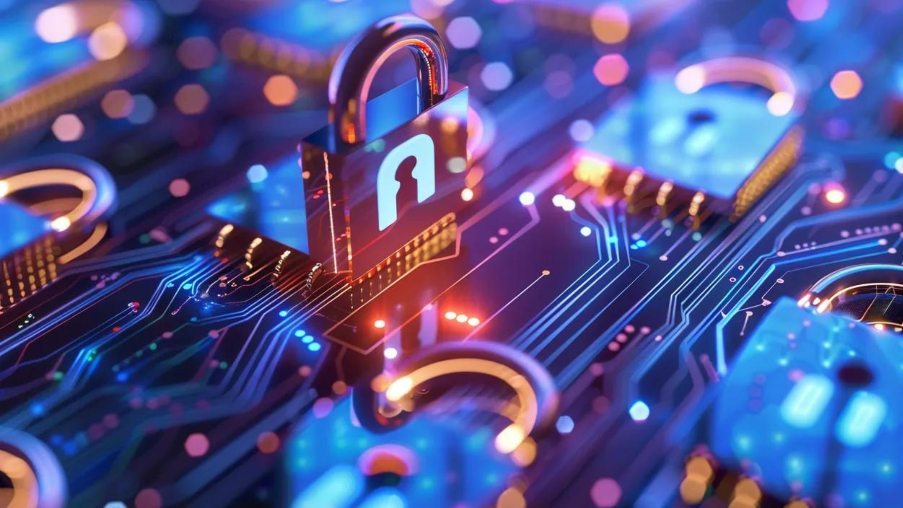What’s the Difference Between MFA and 2FA Authentication?

The Difference Between MFA and 2FA Authentication is Two-factor authentication (2FA) requires exactly two verification methods, while multi-factor authentication (MFA) requires two or more verification methods. All 2FA systems are MFA, but not all MFA systems are 2FA. MFA can use three, four, or more authentication steps.
This article explains the differences between 2FA and MFA authentication methods. You will learn how each system works, their security benefits, implementation costs, and which method fits your business needs. Understanding these authentication systems helps organizations make informed security decisions.
What Is Two-Factor Authentication?
Two-factor authentication (2FA) is a security system that requires users to provide two different types of verification to access accounts or systems. Users must complete both steps to gain access. This method adds an extra layer of protection beyond traditional username and password combinations.
The 2FA process creates a security barrier that stops most unauthorized access attempts. Even if cybercriminals steal passwords, they cannot access accounts without the second authentication factor. This dual requirement makes 2FA significantly more secure than single-factor authentication methods.
How Does 2FA Work?
2FA follows a simple process that most users can complete in under 30 seconds:
- User enters username and password
- System requests second verification method
- User provides second proof (code, notification, or biometric)
- System grants access when both steps pass
The system validates each step independently. If either step fails, access gets denied immediately. This process happens automatically without requiring complex user training or technical knowledge.
What Are the Main 2FA Methods?
The most common 2FA methods include SMS codes, authenticator apps, push notifications, email codes, and hardware tokens. Each method offers different security levels and user experience benefits.
SMS Text Codes: Users receive numeric codes via text message. These codes expire after a few minutes. While convenient, SMS codes face security risks from SIM swapping attacks where criminals transfer phone numbers to new devices.
Authenticator Apps: Applications like Google Authenticator generate time-based codes. New codes appear every 30 seconds. These apps work offline and provide better security than SMS codes because they cannot be intercepted through phone network attacks.
Push Notifications: Mobile apps send approval requests directly to registered devices. Users tap "approve" or "deny" to complete login. This method offers excellent user experience while maintaining strong security through device-specific notifications.
Email Verification: Systems send codes to registered email addresses. Users enter these codes to verify identity. Email codes work well for occasional use but create delays when email servers experience problems.
Hardware Tokens: Physical devices display rotating codes that users read and enter. These tokens provide the strongest security because they cannot be hacked remotely. However, they cost more and can be lost or damaged.
Why Do Companies Use 2FA?
Companies use 2FA because 99.9% of compromised accounts lack multi-factor authentication protection. 2FA blocks common attack methods like stolen passwords, phishing emails, and brute force attacks.
2FA adoption reached 78% for personal accounts and 73% for work accounts in 2024. This growth shows businesses recognize password-only systems create security risks, especially for organizations handling sensitive data like healthcare providers.
Password attacks happen constantly across the internet. Cybercriminals use automated tools to test millions of password combinations against business systems. 2FA stops these attacks immediately because attackers cannot access the second authentication factor.
Data breaches cost businesses an average of $4.88 million in 2024. Many breaches start with stolen employee credentials. 2FA prevents credential-based attacks from succeeding, reducing breach risks significantly.

What Is Multi-Factor Authentication?
Multi-factor authentication (MFA) is a security system that requires users to provide two or more different types of verification to access accounts or systems. MFA combines multiple authentication factors for stronger protection than basic 2FA implementations.
MFA systems can require three, four, or more authentication steps depending on security requirements. Each additional step creates another barrier for attackers to overcome. This layered approach makes unauthorized access extremely difficult.
What Are the Three Authentication Factor Types?
Authentication factors fall into three categories: knowledge factors, possession factors, and inherence factors. True MFA requires combining different factor types rather than using multiple examples from the same category.
Knowledge Factors (Something You Know): Passwords, PINs, security questions, and personal information. These factors rely on information only the user should know. However, knowledge factors face risks from social engineering attacks where criminals trick users into revealing information.
Possession Factors (Something You Have): Mobile phones, security tokens, smart cards, and hardware keys. These factors require physical access to specific devices or objects. Possession factors provide strong security because they cannot be easily duplicated or stolen remotely.
Inherence Factors (Something You Are): Fingerprints, facial recognition, voice patterns, and iris scans. These factors use unique biological characteristics that cannot be easily replicated. Biometric factors offer excellent security and user convenience.
How Does MFA Create Stronger Security?
MFA creates stronger security by requiring different factor types together. Each factor type has different vulnerabilities. Combining multiple types makes attacks much harder because criminals must compromise multiple independent systems.
Example MFA system requiring three factors:
- Password (knowledge factor)
- Security card (possession factor)
- Fingerprint scan (inherence factor)
Attackers must compromise all three factor types to breach the system. This requirement makes successful attacks extremely rare because each factor type requires different attack methods and skills.
Risk-based MFA systems adjust security requirements based on user behavior patterns. Users accessing systems from trusted locations with known devices may need fewer authentication steps. Users accessing from new locations or devices face additional security requirements.
What Industries Require MFA?
Healthcare, finance, government, and defense industries commonly require MFA for regulatory compliance. HIPAA, PCI DSS, and CMMC standards mandate multi-factor authentication for sensitive data access.
Organizations in manufacturing and government contracts face similar requirements for protecting sensitive information.
Healthcare organizations must protect patient health information under HIPAA regulations. Financial institutions need PCI DSS compliance for payment card data. Defense contractors require CMMC compliance for classified information access.
Non-compliance creates serious legal and financial consequences. Organizations face fines, lawsuits, and business license revocation for failing to meet authentication requirements.
How Do 2FA and MFA Compare?
What Are the Key Security Differences?
MFA provides stronger security than 2FA because it can use more authentication factors and requires different factor types. However, strong 2FA implementations can match weak MFA systems depending on the specific methods chosen.
Security strength depends on factor quality, not just quantity. Two strong factors often provide better protection than three weak factors. SMS codes and email verification offer minimal security compared to hardware tokens and biometric scans.
The best 2FA systems use possession factors (authenticator apps) and inherence factors (biometrics) together. The best MFA systems combine all three factor types with risk-based authentication that adjusts requirements based on user behavior.
Which Method Offers Better User Experience?
2FA offers simpler user experience with faster login times, while MFA provides more security but requires more steps. Most users complete 2FA in under 30 seconds. MFA can take 60-90 seconds depending on factor types and system complexity.
2FA works well for daily business operations where users need quick access to multiple systems. MFA suits high-security environments where extra time is acceptable for enhanced protection.
User training requirements differ significantly between methods. 2FA needs minimal training because most people understand the basic concept. MFA requires more comprehensive training to help users understand multiple authentication steps.
What Are the Cost Differences?
2FA implementation costs less than MFA systems because it requires fewer authentication methods and simpler infrastructure. Basic 2FA using SMS or authenticator apps costs $1-3 per user monthly. MFA with biometrics or hardware tokens costs $5-15 per user monthly.
Implementation factors affecting costs:
- Number of authentication methods
- Hardware requirements (biometric scanners, tokens)
- Software licensing fees
- User training and support needs
- Integration with existing systems
- Ongoing maintenance and updates
Many businesses work with managed IT services to reduce implementation complexity and ongoing maintenance costs.
Hardware-based authentication methods increase costs significantly. Biometric scanners cost $100-500 per workstation. Hardware tokens cost $25-75 per user. These upfront costs add up quickly for large organizations.

When Should Businesses Choose 2FA?
Businesses should choose 2FA when they need good security with simple implementation, limited budgets, or basic compliance requirements. 2FA works well for most small to medium businesses that handle moderate security risks.
Small businesses often lack dedicated IT security staff. 2FA provides significant security improvements without requiring extensive technical expertise. Most 2FA systems can be implemented and managed by general IT staff.
What Business Types Benefit from 2FA?
Small businesses, retail companies, and service providers benefit most from 2FA implementation. These businesses handle moderate security risks and need user-friendly systems that employees can adopt quickly.
2FA provides excellent protection for:
- Customer account access
- Employee email systems
- Basic business applications
- E-commerce platforms
- Remote work access
- Financial systems
Professional services firms like law offices and accounting practices find 2FA ideal for protecting client information without creating workflow disruptions.
How Should Companies Implement 2FA?
Companies should implement 2FA using authenticator apps rather than SMS codes for better security. SMS codes can be intercepted through SIM swapping attacks where criminals transfer phone numbers to new devices.
Implementation steps:
- Choose authentication method (app-based recommended)
- Install and configure 2FA system
- Train users on new login process
- Provide backup recovery options
- Monitor usage and security events
Organizations should also consider how 2FA integrates with their existing cybersecurity programs and overall security strategy.
Backup recovery methods prevent users from losing access when they lose phones or change devices. Common backup options include recovery codes, backup phone numbers, and alternative email addresses.
When Should Businesses Choose MFA?
Businesses should choose MFA when they handle highly sensitive data, need strict compliance, or face advanced security threats. MFA suits organizations with higher security budgets and technical expertise to manage complex authentication systems.
Large enterprises typically have dedicated security teams that can implement and maintain MFA systems properly. These organizations often handle sensitive data that requires the strongest available protection.
What Industries Require MFA?
Healthcare, banking, government, and defense industries typically require MFA for regulatory compliance. These sectors handle sensitive data with strict protection requirements that exceed basic 2FA capabilities.
Specific compliance requirements:
- HIPAA for healthcare patient data
- PCI DSS for payment card information
- CMMC for defense contractor systems
- SOX for financial reporting systems
- GDPR for European personal data
Organizations facing these requirements cannot choose their authentication methods freely. Compliance standards dictate specific MFA requirements that must be met exactly.
How Should Organizations Implement MFA?
Organizations should implement MFA by combining different factor types and using risk-based authentication. Risk-based systems adjust security requirements based on user behavior and location patterns.
Advanced MFA features:
- Biometric authentication (fingerprints, facial recognition)
- Hardware security keys
- Location-based risk assessment
- Device trust evaluation
- Behavioral analysis
- Time-based access controls
Professional implementation helps organizations meet complete compliance requirements while maintaining user productivity.
Adaptive MFA systems learn normal user behavior patterns and adjust authentication requirements accordingly. Users accessing systems from trusted locations with known devices may need fewer steps. Unusual access patterns trigger additional security requirements.
What Are Current Authentication Trends?
How Fast Is MFA Adoption Growing?
MFA market size reached $16.3 billion in 2024 and will grow to $49.7 billion by 2025. This 15.2% annual growth rate shows increasing business investment in authentication security.
Large companies lead adoption with 87% using MFA, while small businesses lag at 34% adoption rates. This gap creates opportunities for cybercriminals who target smaller organizations with weaker security.
Technology companies show the highest MFA adoption rates at 87%. Financial services and healthcare follow closely. Manufacturing and retail industries are catching up as they recognize authentication security importance.
What New Authentication Methods Are Emerging?
Passwordless authentication, biometric systems, and AI-powered security are the fastest-growing authentication methods. These technologies reduce password dependence while improving security and user experience.
Emerging trends include:
- FIDO2 hardware keys
- Facial recognition systems
- Voice authentication
- Behavioral biometrics
- Adaptive authentication
- Zero-trust security models
Passwordless authentication eliminates passwords entirely, using biometrics or hardware keys instead. This approach removes password-related security risks while simplifying user experience.
AI-powered authentication systems analyze user behavior patterns to detect anomalies. These systems can identify compromised accounts based on unusual access patterns, typing rhythms, and mouse movements.
What Compliance Changes Are Coming?
PCI DSS 4.0 will require MFA for all payment data access starting in 2025. Federal agencies must implement MFA for all system access. Financial services face new MFA requirements from banking regulators.
Organizations in the financial industry must prepare for these new requirements to maintain compliance and avoid penalties.
European NIS2 Directive requires MFA for critical infrastructure organizations. GDPR enforcement increasingly focuses on authentication security for personal data protection.
What Are Common Authentication Mistakes?
Why Do Authentication Implementations Fail?
Authentication implementations fail when businesses choose weak factors, skip user training, or create overly complex systems. 42% of businesses cite costs as barriers to MFA adoption, leading to poor implementation decisions.
Common implementation problems:
- Using SMS codes instead of authenticator apps
- No backup recovery methods
- Insufficient user training
- Poor system integration
- Weak password policies
- Inadequate monitoring
User resistance increases when authentication systems are too complex or unreliable. Systems that frequently fail or take too long create productivity problems that reduce user acceptance.
How Can Businesses Avoid These Mistakes?
Businesses can avoid authentication mistakes by choosing proven methods, training users properly, and planning for recovery scenarios. Start with simple 2FA before moving to complex MFA systems.
Best practices include:
- Use authenticator apps over SMS
- Provide multiple recovery options
- Train users before deployment
- Test systems thoroughly
- Monitor security events regularly
- Plan for device loss scenarios
Pilot programs help identify problems before full deployment. Testing authentication systems with small user groups reveals usability issues and technical problems.
How Should Companies Choose Authentication Methods?
What Factors Should Guide Authentication Decisions?
Companies should choose authentication methods based on data sensitivity, compliance requirements, user needs, and budget constraints. Security needs must balance with user productivity and implementation costs.
Decision factors:
- Type of data being protected
- Regulatory compliance requirements
- User technical skills
- Implementation budget
- Maintenance resources
- Integration complexity
Organizations handling medical records need stronger authentication than companies managing general business data. Compliance requirements often dictate minimum authentication standards.
What Is the Implementation Process?
The authentication implementation process involves assessment, method selection, deployment, training, and monitoring. Most implementations take 2-4 weeks for basic systems. Complex MFA systems may require 6-12 weeks.
Implementation steps:
- Assess current security risks
- Choose appropriate authentication method
- Select vendor or solution
- Deploy and test system
- Train users on new processes
- Monitor usage and security
For businesses seeking managed IT services, professional implementation reduces risks and improves success rates. Experienced providers understand common pitfalls and can avoid implementation mistakes.
Change management becomes critical for successful authentication deployment. Users need clear communication about why changes are necessary and how new systems benefit security.
What Authentication Method Should You Choose?
Choose 2FA if you need good security with simple implementation, limited budgets, or basic compliance needs. Choose MFA if you handle highly sensitive data, need strict compliance, or face advanced security threats.
Quick selection guide:
- 2FA: Small businesses, moderate security needs, limited budgets
- MFA: Large enterprises, high security requirements, regulatory compliance
Both methods provide significant security improvements over password-only systems. Microsoft reports that MFA blocks 99.9% of automated attacks, making any multi-factor system valuable.
Start with 2FA implementation and upgrade to MFA as security needs grow. The key is choosing methods your users will consistently use while meeting your security requirements.
Most businesses benefit from starting with authenticator app-based 2FA and adding additional factors as needed. This approach provides immediate security improvements without overwhelming users or budgets.
Consider working with cybersecurity professionals who understand both technical implementation and compliance requirements for your industry.
.webp)
.webp)







.webp)





Share Post